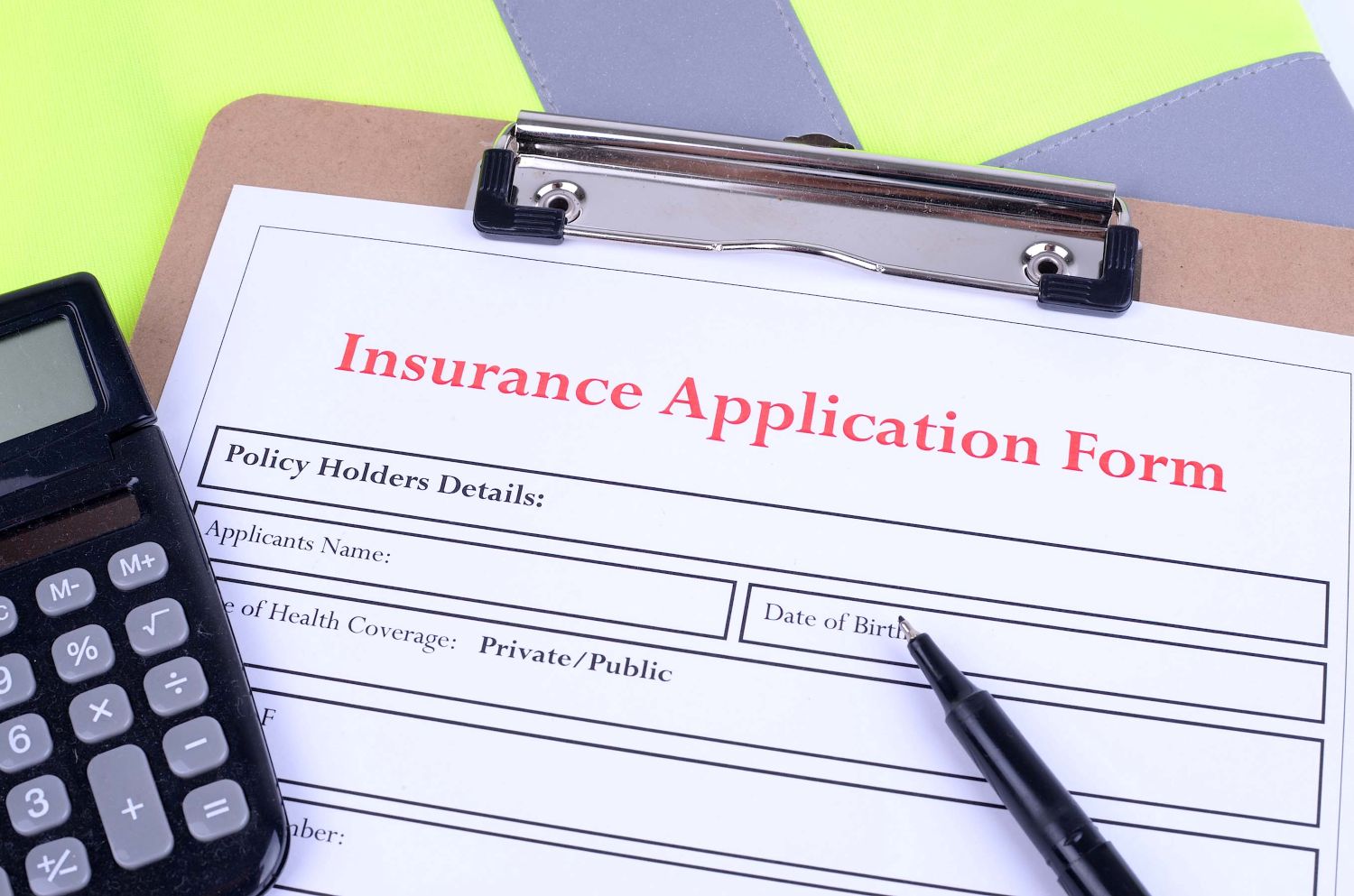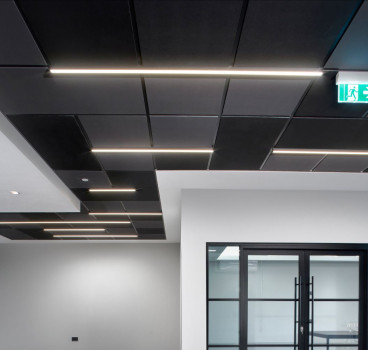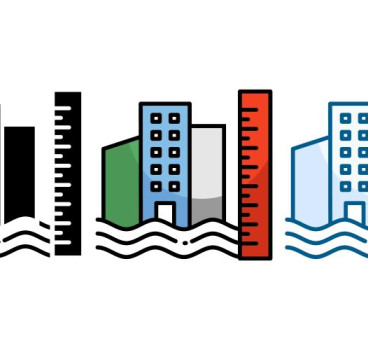The future of construction insurance as it adapts to climate change and AI
The construction insurance sector is entering a period of rapid change. Two forces are driving it more than any others - the accelerating impact of climate change and the rise of autonomous machinery and AI-driven design. Both are reshaping risk profiles in ways that insurers, contractors and project owners have never faced before. The result is a fundamental reassessment of how construction risk is calculated, mitigated and ultimately transferred, writes John Ridgeway.
Extreme weather events are becoming more frequent, more intense and less predictable. Floods, heatwaves, wildfires and storms are no longer rare disruptions; they are recurring operational threats. For construction insurance, this alters the baseline assumptions about project delays, damage to works in progress, site safety and the cost of claims.
Underwriting models that rely on historical weather data are becoming less reliable. Regions once considered low-risk for flooding now face seasonal challenges. Areas historically free from wildfire threats now see summer evacuation orders. This volatility increases the cost of coverage, narrows the pool of insurable locations and forces insurers to add climate-resilience clauses to their policies.
From an operational perspective, contractors are being asked to demonstrate climate adaptation strategies before they can secure cover. These include site drainage systems capable of handling unprecedented rainfall, heat-resilient materials, wildfire risk assessments and disaster recovery protocols. Insurers are beginning to audit these measures in detail, treating them as prerequisites rather than optional best practices.
The cost implications are significant. Premiums for projects in climate-vulnerable areas are rising sharply and insurers are introducing exclusions for certain types of weather-related damage. This shifts more of the risk back to contractors and developers, making robust risk-management planning a central requirement of project financing.
Related read: What climate-resilient design looks like in practice.
Supply chain fragility
Climate change also affects the wider construction ecosystem. Storms, floods and droughts disrupt global supply chains, delay material deliveries and increase costs. These indirect effects complicate insurance coverage because they often fall into grey areas between property, business interruption and contract performance policies.
Insurers are responding with more complex policy structures, blending multiple forms of coverage to address climate impacts. However, this complexity increases the potential for disputes over liability. Contractors must now be more precise in documenting how delays or damages relate to specific insured events. Insurers are tightening claims investigation procedures to prevent overlaps and fraudulent claims.
In the longer term, the insurance market will favour contractors who can prove a high degree of climate resilience not only on-site, but across their procurement and logistics networks. This may lead to preferred-partner insurance programmes, where only contractors meeting strict sustainability and resilience criteria qualify for competitive rates.
While climate change transforms the environmental risk profile, the rapid adoption of artificial intelligence and autonomous equipment in construction is also creating a new class of legal and financial liability.
Autonomous plant machinery is now capable of excavation, grading, lifting and even bricklaying with minimal human oversight. AI-driven design platforms can produce structural plans, optimise materials usage and simulate build sequences. These technologies promise efficiency gains and safety improvements, but they also create unique challenges for insurers.
If an autonomous machine damages property or injures a worker, determining liability is complex. Is the contractor responsible for not supervising the machine closely enough? Is the manufacturer at fault for a design flaw? Or does the liability rest with the software developer if the AI’s decision-making process led to the error?
Traditional construction insurance policies are written on the assumption that human error is the primary cause of accidents. AI and automation break that assumption. Insurers are now exploring hybrid liability models that combine elements of professional indemnity, product liability and cyber insurance to cover AI-related incidents. These new models must account for not just physical damage, but also the intangible risks of corrupted design files, data breaches and algorithmic bias.
AI in design and professional indemnity challenges
AI-assisted design software can generate highly optimised building plans in a fraction of the time taken by human architects and engineers. However, when an AI-designed structure fails, the legal chain of responsibility is unclear. Professional indemnity insurance is designed to cover errors in human judgement, but AI operates as a tool with its own autonomous decision-making processes.
This creates two major problems. First, AI systems often function as “black boxes,” making it difficult to explain how a design decision was reached. Second, the AI’s training data and algorithms are often proprietary, meaning that neither the contractor nor the insurer can fully audit the decision process.
Insurers are beginning to demand that contractors using AI in design retain human oversight and sign-off at key stages. This keeps liability traceable to a licensed professional, but it also limits the extent to which contractors can rely on AI without incurring additional insurance costs.
Governments and regulators are aware of these emerging risks. Some jurisdictions are already drafting legislation to clarify liability in cases involving AI-driven machinery and design. This may involve shared liability models between contractors, equipment manufacturers and software providers, or it could result in the creation of mandatory AI-specific insurance products.
For climate change risks, regulation is moving towards mandatory resilience measures in public-sector contracts and infrastructure projects. Insurers will play a central role in enforcing these standards by making them conditions of coverage. In both cases, regulatory alignment between insurers, contractors and government bodies will be critical. Without it, the risk of legal disputes and uninsured losses will rise.
One consequence of these changes is that data collection and analysis are becoming central to both climate and AI-related risk management. Insurers are demanding real-time environmental monitoring data from construction sites, as well as detailed performance logs from autonomous machinery.
For climate resilience, this data allows insurers to track compliance with risk-mitigation measures. For AI, it provides a record of machine decision-making, operational conditions and any anomalies that might indicate fault.
Contractors who can supply this level of transparency will find it easier to secure competitive insurance terms. Those who cannot may find themselves facing higher premiums or being excluded from certain policy types altogether.

The combined effect of climate change and AI liability is pushing insurers towards more granular, usage-based policy models. Instead of a single annual premium, contractors may pay based on site-specific risk profiles, the number of autonomous machines in use, or the degree of exposure to extreme weather events.
Dynamic pricing models, already common in sectors like fleet insurance, are likely to become standard in construction. These will reward contractors who actively reduce their risk exposure through resilience planning, preventative maintenance and AI oversight.
Policy structures will also become more modular, allowing coverage for climate risks, AI liability, cyber risks and traditional hazards to be purchased and renewed independently. This will give contractors more flexibility, but will require them to manage their insurance portfolios more actively.
The role of reinsurance in managing mega-risks
As claims from climate events grow in both frequency and scale, primary insurers will increasingly rely on reinsurance to spread the risk. However, reinsurers are tightening their criteria and charging higher rates for climate-exposed portfolios.
This pressure will be passed down the chain, making it more expensive for contractors to operate in high-risk areas. Some insurers may even withdraw from covering certain geographies altogether, as has already happened in parts of the United States with wildfire and flood risks.
For AI liabilities, reinsurance markets are still developing. The novelty and unpredictability of AI-related claims make it difficult for reinsurers to price the risk accurately. Until more claims data is available, reinsurance capacity for AI liability will remain limited and expensive.
All this means that contractors and insurers will need to work more closely than ever to manage these evolving risks. Climate change adaptation will require not just stronger site protection measures, but also strategic decisions about where and when to build. AI adoption will demand clear governance frameworks, rigorous testing and human oversight to maintain insurability.
In the next decade, construction insurance will move from a reactive model to a proactive one. Instead of simply pricing in risk, insurers will be active partners in risk prevention, offering consultancy services, resilience audits and AI safety assessments as part of their packages.
Contractors who adapt early to these expectations will gain a competitive advantage. They will be able to secure more favourable insurance terms, win contracts that require advanced risk-management capabilities and avoid costly delays caused by disputes over liability.
Additional Blogs

When fire breaks out who really knows the system
The story that caught my attention recently wasn’t about fire growth or building loss, it was about confusion. Specifically, the confusion faced by the fire service when arriving at buildings...
Read moreThe design and development of Nexus Layouts
When Zentia set out to rethink the suspended ceiling, the brief was clear: deliver greater creative freedom for designers, more distinctive visual identity for clients, and a solution that could keep...
Read more

The 100-year construction project or why longevity Is the new sustainability
For decades, the construction sector has defined sustainability through metrics such as operational energy, embodied carbon, material efficiency and circularity. These measures remain vital, but a...
Read more